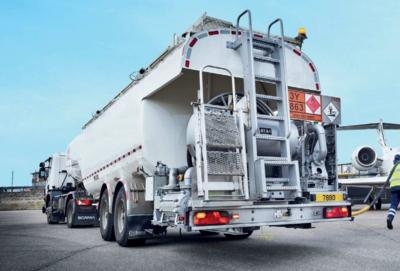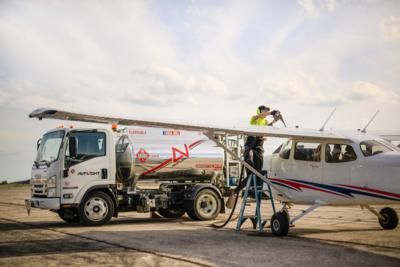Sat, Sep 17, 2022
Recent Developments in Lead-Free Fuel Brings Unique Considerations for Avgas Providers
The National Air Transportation Association has released a white paper regarding recent developments in unleaded avgas following the STC approval for General Aviation Modifications Inc’s. (GAMI) G100UL.

The Association's GA Fuel Subcommittee brought together a range of industry minds to create recommended best practices for the deployment of the unleaded fuel. The group threw its support behind the Eliminate Aviation Gasoline Lead Emissions (EAGLE) Initiative’s goal of an entirely lead-free general aviation ecosystem by 2031. Until now, the industry lacked a real, easily scaled, 100LL replacement that would require a minimum of infrastructure and provide maximum interoperability to ensure industry-wide takeup of the new tech. The FAA’s recent issuance of Supplemental Type Certificates approving the use of GAMI’s 100 octane unleaded avgas product, G100UL, in all spark-ignition piston aircraft and engines in the general aviation fleet turns that industry gap on its head. Now, a large plurality of aircraft can easily begin using unleaded avgas, with minimal fuss compared to some previous solutions that required specially formulated fuels with limited market penetration. NATA notes that
this major step forward will take some work, but affirms that the launch producer for G100UL, Avfuel, will soon be joined by a handful of other companies in expanding availability. Swift Fuels, Phillips66/Afton Chemical, and Lyondell Chemical/VP-Racing are all actively pursuing approval to produce and sell GAMI's new offering.

“With the spotlight glowing ever brighter on unleaded aviation fuels, industry stakeholders have been proactively seeking information on considerations for offering more environmentally friendly fuel options,” stated NATA Managing Director of Industry and Regulatory Affairs Megan Eisenstein. “NATA is pleased to offer guidance to assist them in taking a leadership role in advancing the national effort to reduce lead emissions from piston-engine aircraft through safe and effective unleaded avgas implementation.”
The white paper assists the unleaded push by suggesting 4 key phases for those fuel providers offering the 100LL replacement. Those phases - Discovery, Preliminary Communications, Infrastructure Considerations, and Final Communications - will help delineate efforts as stakeholders look to spread awareness and ease their area into safe and effective unleaded fuel use.
“It is critical to have a misfueling prevention program in place, and to implement comprehensive management of change processes and perform risk assessments when introducing new fuels,” said Steve Berry, NATA Managing Director of Safety and Training. “Keeping lines of communication open between pilots and FBOs throughout the fueling process is also essential.” NATA reminds the industry of its Safety 1st program, as well as its soon-to-be-updated programs to prevent misfueling.
More News
Pilot Applied Full Aft Stick And Nose-Up Trim, But The Airplane Remained On The Runway Analysis: The pilot reported that a preflight inspection and flight control checks revealed n>[...]
A Few Questions AND Answers To Help You Get MORE Out of ANN! 1) I forgot my password. How do I find it? 1) Easy... click here and give us your e-mail address--we'll send it to you >[...]
From 2022 (YouTube Edition): Before They’re All Gone... Humankind has been messing about in airplanes for almost 120-years. In that time, thousands of aircraft representing i>[...]
Advanced Air Mobility (AAM) A transportation system that transports people and property by air between two points in the NAS using aircraft with advanced technologies, including el>[...]
Aero Linx: MQ-1B Predator The MQ-1B Predator is an armed, multi-mission, medium-altitude, long-endurance remotely piloted aircraft that is employed primarily as an intelligence-col>[...]
 NTSB Final Report: Douglas A-4K
NTSB Final Report: Douglas A-4K ANN FAQ: Q&A 101
ANN FAQ: Q&A 101 Classic Aero-TV: PBY Catalina--From Wartime to Double Sunrise to the Long Sunset
Classic Aero-TV: PBY Catalina--From Wartime to Double Sunrise to the Long Sunset ANN's Daily Aero-Term (07.01.25): Advanced Air Mobility (AAM)
ANN's Daily Aero-Term (07.01.25): Advanced Air Mobility (AAM) ANN's Daily Aero-Linx (07.01.25)
ANN's Daily Aero-Linx (07.01.25)




